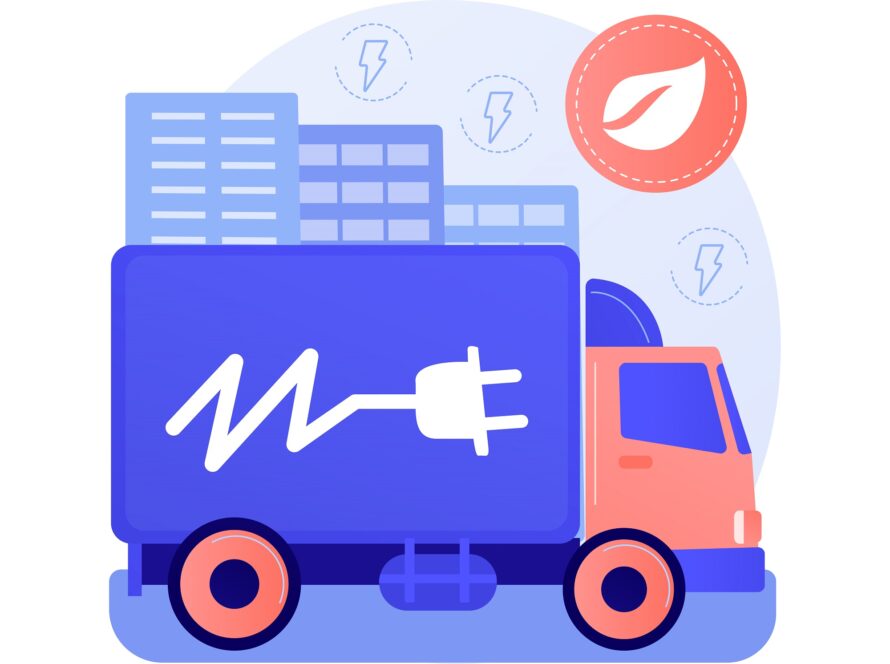Introduction
In the fast-paced world of trucking dispatch, communication is the key to a successful operation. Efficient and clear communication between dispatchers and drivers is crucial for ensuring timely deliveries, maintaining safety standards, and optimizing overall logistics. In this blog post, we’ll delve into the importance of clear communication in trucking dispatch and provide actionable tips to enhance communication efficiency.
Importance of Clear Communication
Timely Updates for Improved Planning:

1. Dynamic Route Planning:
- Timely updates from drivers provide dispatchers with real-time data on the progress of deliveries and potential obstacles.
- This allows dispatchers to dynamically adjust routes based on traffic conditions, road closures, or unexpected delays.
2. Optimized Scheduling:
- With clear communication, dispatchers can receive updates on delivery times and adjust schedules accordingly.
- This optimization helps in reducing downtime, improving overall efficiency, and ensuring timely deliveries to customers.
3. Resource Allocation:
- Dispatchers can allocate resources more effectively when they have accurate information about the location and status of each truck.
- This prevents underutilization of assets and enhances the overall productivity of the trucking fleet.
4. Avoiding Potential Delays:
- Real-time information allows dispatchers to proactively address issues that could lead to delays.
- For example, if a driver encounters unexpected road construction, the dispatcher can reroute other drivers to avoid the same area and prevent a domino effect of delays.
Enhanced Safety Measures:
1. Weather Conditions:
- Clear communication enables drivers to report current weather conditions, such as heavy rain, snow, or fog.
- Dispatchers can then provide guidance on safer routes or advise drivers to take necessary precautions, reducing the risk of accidents in adverse weather.
2. Road Closures and Traffic Incidents:
- Immediate communication about road closures or traffic incidents allows dispatchers to reroute drivers and prevent unnecessary delays.
- This proactive approach not only improves efficiency but also contributes to a safer working environment for drivers.
3. Emergency Situations:
- In case of emergencies, rapid communication ensures that dispatchers can quickly coordinate with emergency services and provide assistance to drivers.
- This can include rerouting a driver away from a hazardous situation or arranging for prompt support in case of accidents or breakdowns.
4. Accident Prevention:
- Statistics indicate that effective communication reduces the likelihood of accidents by enabling drivers and dispatchers to collaboratively address potential safety hazards.
- Accurate and timely information allows for better decision-making, contributing to accident prevention and overall safety on the road.
Customer Satisfaction:

1. Accurate and Timely Information:
- Clear communication ensures that dispatchers can provide customers with accurate and timely information on the status of their deliveries.
- Customers appreciate being informed about any delays or changes in schedule, contributing to transparency and trust.
2. Proactive Issue Resolution:
- When dispatchers can anticipate and communicate potential delays, they can work proactively to find solutions.
- This proactive approach demonstrates a commitment to customer satisfaction and helps build stronger relationships with clients.
3. Positive Customer Experiences:
- Anecdotes or case studies showcasing instances where clear communication positively influenced customer relationships can highlight the direct impact on customer satisfaction.
- Positive experiences often lead to repeat business and positive word-of-mouth, benefiting the trucking company’s reputation.
Tips for Improving Communication Efficiency
Utilize Advanced Communication Technologies:
In the realm of trucking dispatch, leveraging advanced communication technologies such as two-way radios, GPS tracking systems, and mobile apps brings multifaceted advantages. Two-way radios facilitate instantaneous and direct communication between dispatchers and drivers, ensuring quick updates and swift responses. GPS tracking systems provide real-time location data, enabling dispatchers to monitor routes, optimize schedules, and promptly respond to any deviations. Mobile apps enhance accessibility and offer a platform for seamless information exchange, allowing for instant updates on delivery status, route changes, or emergencies. Recommendations for reliable communication tools include established brands known for their durability, coverage, and user-friendly interfaces, fostering a cohesive and efficient communication network that is pivotal for the success of trucking dispatch operations.
Establish Clear Protocols and Procedures:
Establishing clear protocols and procedures is crucial for the smooth functioning of a trucking dispatch operation, emphasizing consistency and efficiency. Standardized protocols foster common understanding, reducing misunderstandings, and enhancing operational effectiveness between dispatchers and drivers in trucking communication. Routine check-in protocols should specify vital information like location, estimated arrival, and possible delays for effective communication. Define protocols for emergencies: report incidents, seek assistance, and prioritize safety, ensuring the well-being of drivers and cargo. For unexpected delivery changes, protocols must swiftly communicate rerouting, schedule updates, and notifications to all relevant parties. Implementing effective protocols minimizes disruptions, improves response times, and maintains clear communication in trucking dispatch operations.
Regular Training and Skill Development:
Regular training and skill development are integral components of a successful trucking dispatch operation, ensuring that both dispatchers and drivers possess the communication skills necessary for efficient and safe logistics. The dynamic nature of the industry emphasizes the need for ongoing training programs to keep professionals abreast of the latest communication technologies and strategies. Training modules should focus on enhancing verbal and written communication, utilizing advanced communication tools effectively, and addressing customer interactions. Resources could include workshops, webinars, or online courses that cover topics such as active listening, crisis communication, and conflict resolution. By investing in continuous training, trucking companies can foster a culture of continual improvement, equipping their personnel with the skills needed to navigate the complexities of communication in the ever-evolving landscape of the trucking industry.
Encourage Open Dialogue:
Fostering an open and transparent communication culture within a trucking company is crucial for building trust, improving collaboration, and addressing issues proactively. An environment that encourages open dialogue creates a sense of shared responsibility and promotes a positive work atmosphere. To achieve this, leadership should actively communicate the importance of openness and set the example. Regular team meetings can serve as forums for discussion, allowing drivers to express concerns, share insights, and contribute to decision-making processes. Implementing an open-door policy ensures that drivers feel comfortable approaching management with any issues or suggestions. Anonymous reporting mechanisms can be established to provide an additional layer of confidentiality, encouraging drivers to voice concerns without fear of reprisal. By actively seeking and valuing input from drivers, trucking companies can foster a culture of transparency that not only enhances communication but also contributes to a more resilient and adaptable organization.
Implement Feedback Mechanisms:
Advocating for the establishment of feedback mechanisms between dispatchers and drivers is essential for creating a dynamic and responsive communication culture within a trucking company. Constructive feedback serves as a catalyst for continuous improvement in communication processes. By fostering a two-way dialogue, dispatchers can gain valuable insights into the challenges faced by drivers on the road, allowing for a more empathetic understanding of their experiences. This feedback loop not only enhances communication but also enables the identification of areas that require optimization.
Dispatchers can use constructive feedback to refine protocols, address recurring issues, and implement changes that positively impact overall operational efficiency. Moreover, the collaborative nature of feedback encourages a sense of shared responsibility, reinforcing the notion that both dispatchers and drivers contribute to the success of the trucking operation. Establishing and maintaining these feedback mechanisms is not just a means of improvement but a commitment to creating a culture of continuous learning and refinement within the organization.
Prioritize Active Listening:
Emphasizing active listening skills is paramount in the trucking industry to foster effective communication between dispatchers and drivers. Emphasizing active listening fosters an environment where drivers feel heard, enhancing collaboration, and problem-solving in dispatch operations. Practical tips for dispatchers to enhance their active listening abilities include giving full attention to the speaker, using non-verbal cues to show engagement, delaying judgment until fully understanding the driver’s perspective, asking clarifying questions, reflecting on information before responding, empathizing and validating the driver’s concerns, avoiding interruptions, providing constructive feedback, and continuously striving for improvement through reflection and ongoing training. Active listening strengthens dispatcher-driver communication, fostering harmony and efficiency in trucking operations.
Conclusion
In the dynamic world of trucking dispatch, effective communication is the linchpin holding operations together. By understanding the importance of clear communication and implementing practical tips for improvement, trucking companies can navigate the challenges of the road more efficiently, ensuring not only the timely delivery of goods but also the safety and satisfaction of all stakeholders involved.





